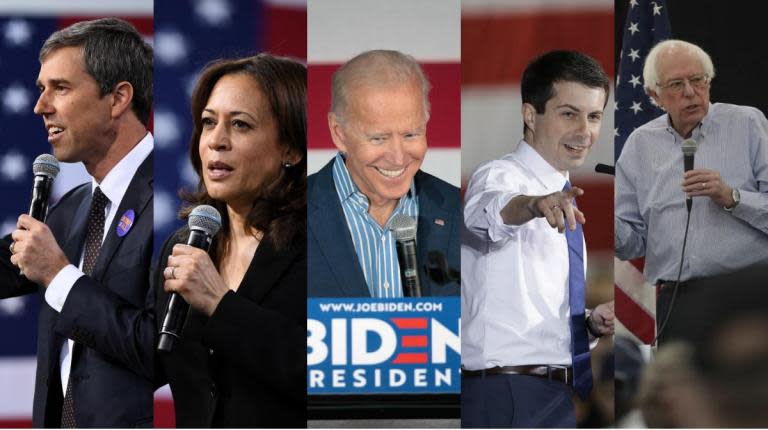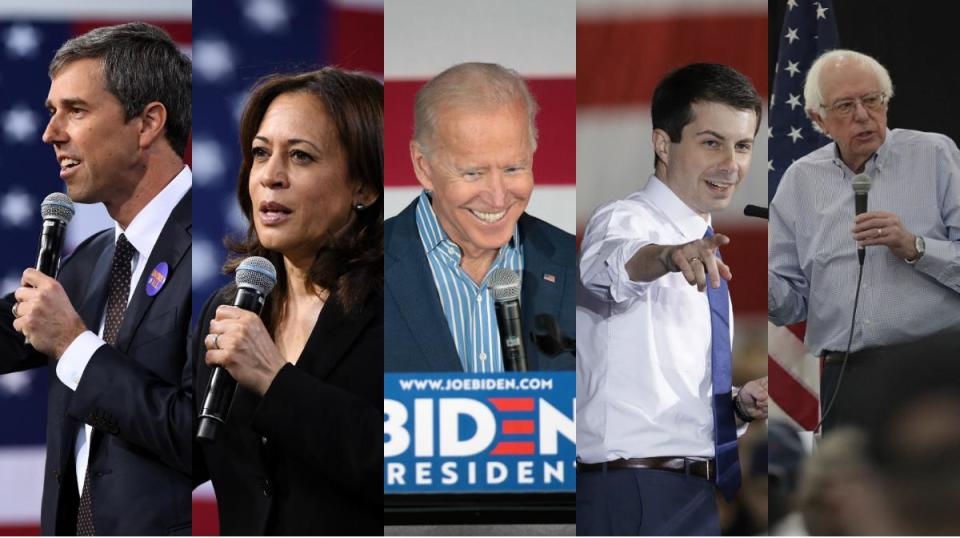It’s not just Trump to blame for the number of Democrats campaigning to be president in 2020
And so the Democratic race to become the 2020 presidential nominee reaches two dozen, or 23 depending on how seriously you take all of the candidates. It is the largest field in modern history.
The Democrat races for the 1972 and 1976 elections both topped out at 16, and there were 17 Republicans as Donald Trump began his march towards the White House in 2016.
New York mayor Bill de Blasio is the latest to enter the race this time around, hoping to become the first mayor to gain the presidency.
The closest a mayor has come was in 1812 when DeWitt Clinton – who was also from New York – lost to James Madison in the general election.
It is not just that piece of history De Blasio is fighting – the crowded field means that making it through to become the party’s nominee will be unlike any other race.
So why is the field so stocked for 2020?
Well, as you might expect, some of it has to do with the current president. Trump ran a populist campaign with hard lines on immigration, crime and healthcare that have riled politicians and would-be politicians across the spectrum. That has brought more people to the table to fight him.
In his announcement, De Blasio said Trump was “a bully” who he knew how to fight. Such claims have been typical of the Democratic field.
“It’s an election that, for Democrats, has a sense of urgency,” Julian Zelizer, professor of history and public affairs at Princeton University, told Bloomberg recently.
“It’s a historic election. The sense of the risks of a second Trump term are great, so that’s going to inspire more Democrats than usual to go through what’s a brutal process: running for president.”
Trump also offers hope from an insurgent campaign perspective.
He did not enter the race until June the year before the 2016 election – but he drove to the top of the candidate standings very quickly. We still have at least three weeks until we reach the same point in this campaign.
As well as putting in his own money, he also ended up bringing in 69 per cent of his individual donations from small donors giving $200 or less by election time.
It is this type of funding that can keep smaller Democrat candidates, who cannot pull in big donations, in the race for longer.
Indeed, the Democratic National Committee’s rules for the first of the party’s debates on 26 and 27 May push candidates towards this. To qualify for one of the 20 spots over two nights, candidates must receive contributions from 65,000 unique donors across 20 states or have at least 1 per cent support in several public polls.
The fundraising may be easier, with some candidates struggling to get pollsters to put their names on the lists of surveys and others polling at essentially 0 per cent. This plays into the larger point that the barriers for entry to the national race are so much lower than they used to be. Campaigners are able to take their message to the people without support from big broadcasters.
With networks stretched for the staff needed to cover events from 20+ candidates across multiple states, the use of Twitter, Facebook videos and adverts and other social media strategies can have a bigger impact.
Indiana mayor Pete Buttigieg is a case in point. He received the most interactions on Twitter over a 30-day period into April and, while he has been helped by the reaction to a CNN-broadcast town hall event, social media has no doubt helped his cause.
Another example is Julian Castro, a former housing and urban development secretary in the Obama administration, who spent nearly a quarter of his operating expenses during the January-to-March fundraising period on digital ads, Federal Election Commission records show.
However, social media can be an echo chamber. Buttigieg admitted at an event in South Carolina earlier this month that he “needs help” reaching black vote – which he will need to make an impact – with some polls placing him at 0 per cent support with African-Americans in the state.
But in the records for the last funding window of January to March, Buttigieg and even less well-known candidate Marianne Williamson – who offers a “spiritual manifesto” – raised 64 and 60 per cent of their donations respectively from small donors.
That puts them behind only Bernie Sanders, Elizabeth Warren and Andrew Yang on that metric. In a field that won’t likely be cut significantly until February or March 2020, that can keep them in the race.
There have always been issue candidates, the most extreme this year being Mike Gravel, who at 88 merely wants to get on to the debate stage to highlight a non-interventionist foreign policy, direct democracy, and universal health care.
His campaign is being run by a 17-year-old and is not being taken terribly seriously. But, given the fractured political climate, other candidates are happy to ride the wave of one issue.
Washington governor Jay Inslee is concentrating on climate change, while Eric Swalwell is concerned with gun violence.
All it takes is one tweet, or short clip and you can pick up momentum for days. In decades past, this would have been thanks to a soundbite on television. Nowadays, TV will come to you once the message is shared enough via other channels first.
Joe Biden is the frontrunner – big money and name recognition still give a huge advantage to people like him. But candidates appear to feel like they can last longer than in the past, and in such a crowded field, holding on until there are four or five people left may be the key.


